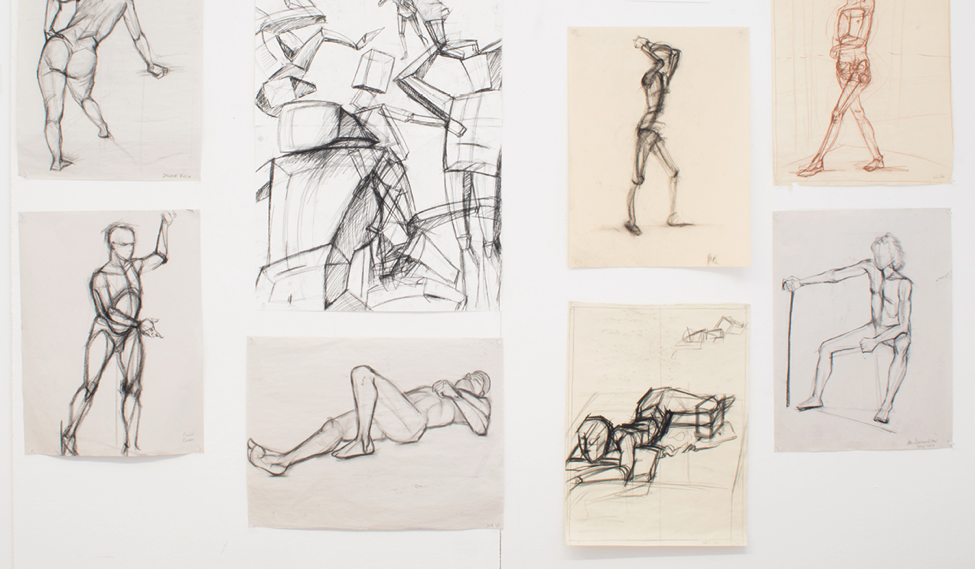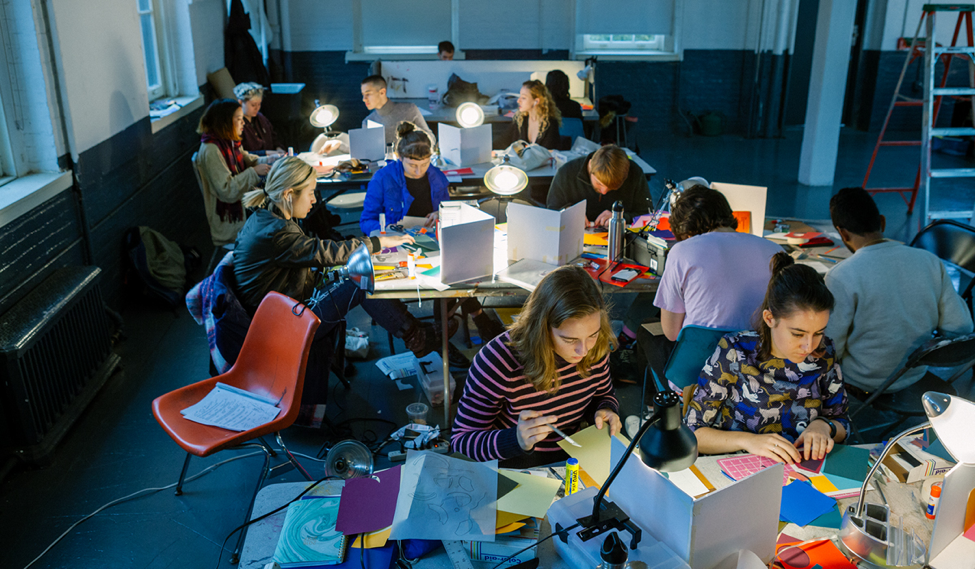
With the 2017–2018 academic year, the Foundation program has rolled out a new curriculum reshaped for the next generation of artists and problem solvers. While the program has evolved since renowned designers and faculty members Donald Dohner, Alexander Kostellow, and Rowena Reed initiated their revolutionary “Design and Structure” curriculum for first-year Pratt students in 1939, this marks the most significant curriculum revision in the program’s history. As the School of Art and the School of Design were established as distinct schools, it was important to reexamine Foundation’s mission, goals, and results to prepare students to thrive in an array of majors, from industrial design to digital arts.
The program was reshaped through a five-year research and development process that included input from and discussion with the Schools of Art, Design, and Liberal Arts and Sciences, based on the question: How do we train problem solvers, practitioners who can go from passive learning to become active makers in their disciplines? Prattfolio sat down with Acting Chair Kim Sloane and Assistant Chair Natalie Moore to discuss how the program has changed.
How will Foundation be different for first-year students this year?
The new Foundation program maintains the essentials of traditional practice while introducing opportunities to apply these principles in extended projects. The goal of those projects is to solve problems and communicate meaning. The Foundation concepts are understood first through individual assignments and are then put into practice in multistep projects that are guided by the design process. This process includes research, iteration, testing, prototyping, and finally presentation. Writing has become an important component in this process, as a tool for defining problems, self-assessment, reflection, and presentation.
The first half of the year’s courses—Light, Color, and Design, and Visualization and Representation—will stay grounded in the established fundamentals: concept, element, and skill. During the second semester, students will be challenged to think about what they learned and apply their understanding. They’ll move into more self-directed, independently motivated projects. A main objective is for students to leave with an awareness of the design process that allows them to solve problems and apply concepts and elements intentionally, and for a purpose. The evidence of this might be shown in a process book or a visualization map that would accompany a presentation to the class.
The Form, Space, and Process, and Time and Movement classes have been redesigned as one-semester experiences with full six-hour studio days, which will allow for immersion in the material. Form, Space, and Process will introduce students to the principles of three-dimensional design with an emphasis on heightening awareness of the three dimensions we live and work in. Time and Movement will introduce students to ordering information in time through digital tools. This will include skills in timing and pacing, sound-image relationships, and interactivity—made possible through elementary coding.

What makes Pratt Foundation unique?
The continuous yearlong courses—Visualization and Representation, and Light, Color, and Design—are one thing that sets Pratt Foundation apart. We believe this continuity creates a more effective learning environment for our students, without disruption—they begin and end with the same cohort and have the same professor all year. Being part of this learning community helps build confidence and risk taking. Also, it allows faculty to know students well and monitor their development throughout the year. Further, our four courses are designed as an integrated whole that will provide all students with the means to know the world in all its dimensions—the imagination can be fully developed only in such a multidimensional mental space.
The program draws on Pratt’s strong making-centered tradition, though at the same time we recognize the changing world and the need to equip students to participate in it. How do we stay current and on top of present-day technologies while preparing students for the unknowns of the future? A large part of Foundation is students learning how to learn. New to Foundation is our objective to make explicit the stages of the design, or creative, process—our research has shown that these stages are equivalent to the stages of self-regulated learning. So, we believe that we can teach the design process and at the same time develop awareness of the learning process. Students will not only master content but know how to solve problems, and as a result will develop the confidence needed to succeed in their four years at Pratt and to meet the unknown challenges of their futures.
What opportunities are there for the program to continue to grow?
Cross-disciplinary collaboration is an important idea that we would like to incorporate more explicitly. We are always experimenting with collaborations and have come up with a list of concepts that are relevant across disciplines to help move this effort forward. Along with revising the curriculum to integrate with the upper departments, another goal is to connect with Art History and English in the School of Liberal Arts and Sciences. We are emphasizing research and writing, as well as the practice of collaboration to draw out connections between students’ work across all their disciplines.
This article was originally published in Prattfolio (Fall/Winter 2017). Read the issue at www.pratt.edu/alumni.
Images, top to bottom: Foundation student work; photograph by Tom Hayes. First-year students in Light, Color, and Design Lab.